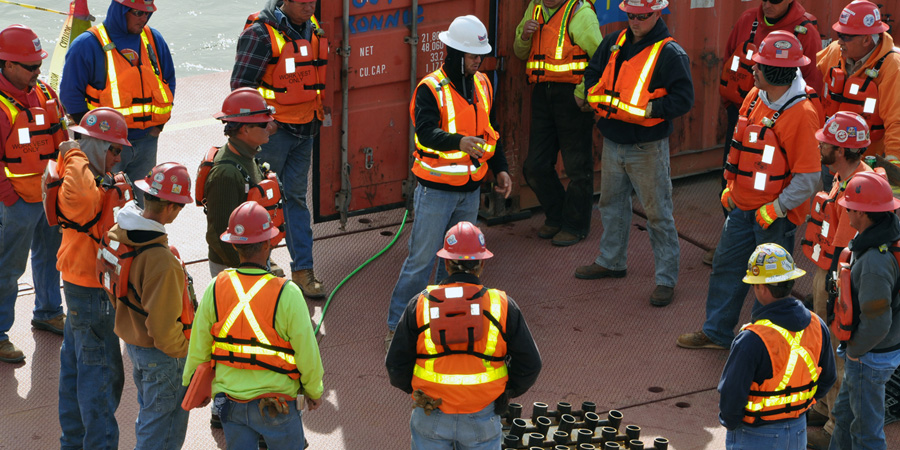Challenges against positive health and safety culture

The health and safety culture of an organization is the system of shared values and beliefs about the importance of health and safety in that workplace. The culture is how workers at all levels within the organization think and feel about health and safety, and about how this translates into their behaviors.
The culture of an organization makes the greatest contribution to the health and safety performance of an organization. Unfortunately, culture is not an easy concept to understand; measure or manage. A good safety management system can only go some way to setting the scene for developing a good culture, but a culture goes much deeper than that. Before anything that can be discussed one needs to be clear about what the safety culture means.
The culture may be positive or negative and will pervade the whole organization from top to bottom. It takes long time to develop a good culture, may be beyond five years. But the erosion can occur very quickly than its growth. A negative culture costs lives and money. It is not difficult to create a positive safety culture unless all those challenges in its way are defeated as discussed below. The aim of this article is to discuss the challenges and realize solutions to achieve a desired health and safety culture within a company.
It was a common belief particularly in developing countries that safety costs money and is a threat to the profit. But nowadays many of them have realized that safety culture means an investment and a way of life, securing profits. Companies prepare very good procedures on paper but when it comes to procurement, the management starts looking at the budget. If safety is not adequately resourced in terms of money and personnel, then positive improvements will be hard to achieve. For example, a health and safety budget being cut to achieve financial target resulting in the removal of full time safety officers and safety stewards.
In many contractor organizations, the management behavior is reactive, prioritizing the clients and legal requirement. Safety is seen as a “priority” but not as a value. Can a worker who worked in a night shift, attend a full day safety training the next day? How effective that training will be for him? Whether that worker will perceive this as a good safety culture or a punishment? In the absence of senior management’s commitment, resources and attention will not be paid to health and safety. Priorities will lie elsewhere and others within the organization will respond accordingly.
Change is unsettling for all people in an organization and during times of change, people may lose their belief in the company’s aims and means.
Remember, other than safety committee; there are other effective means of consultation. Generally, management engages itself only in setting up a safety committee which is a legal obligation. A good consultation simply means that you and your staff are aware of all health and safety issues and work together to make decisions to improve your workplace and your safety performance. They can often provide valuable inputs and identify serious hazards and risks that the management may not be aware of and suggest ways to overcome these risks.
Worker participation is a “must have” not a “nice to have”.
Lack of safety proficiency amongst the workforce is one of the major challenges. Very few companies may be one out of ten are among those who provide full-fledged training facilities along with full time EHS trainers or at times invite consultants. They allow workers to undergo job specific trainings which are a clear indication of not only raising competencies but a management commitment i.e. what they say is what they do. Providing retraining, encouraging and establishing reporting systems, investigations, behavioral programs, conducting safety promotional programs are additional factors to improve the culture that demands considerable resources. Some managements fail to secure trust of their workers as their decision changes as per the situation. If the workers do not have trust in management to make sound decisions, then they will not engage in the initiatives started by the management. Here the workers lack confidence in management.
In conclusion, developing a sustainable culture is not based simply on a sound management system but within a management style that executes the system effectively in the field. As such, establishing a positive culture is solely a prime responsibility of the management. It is only with the clear commitment that organizations can hope to make positive improvements to their health and safety culture. The attitude of your staff and your business health and safety performance depends on your leadership and commitment, resources, effective communication, consultation, change management, gaining worker confidence and even much more as explained. These are viewed as challenges for any organization in light of efforts, time and cost, in achieving a positive health and safety culture.



Very important topic and implementable suggestions. thanks for sharing